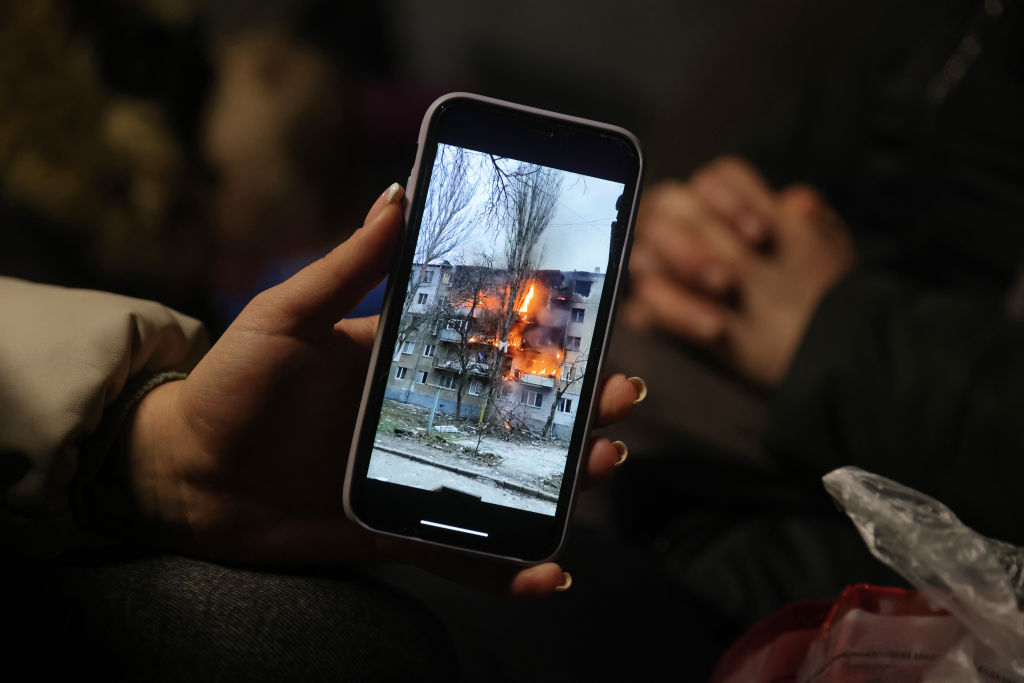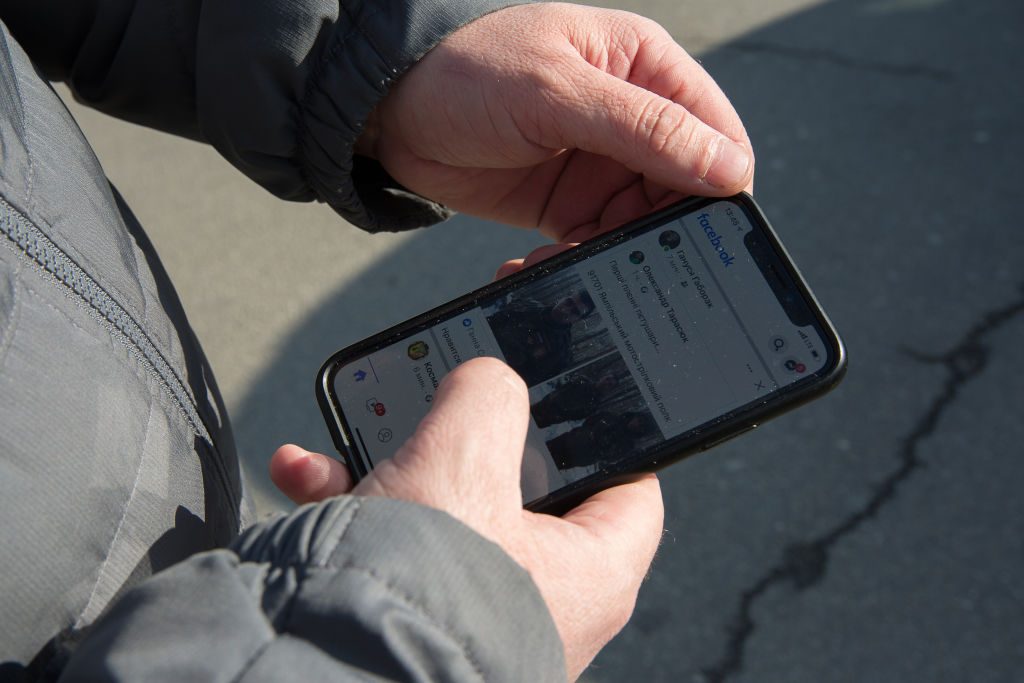The Role Of The Internet In Ukraine’s Information War
Russia's invasion of Ukraine highlights how social media and online communication have added new dynamics to age-old patterns of information warfare, Texas A&M experts explain.

By Luke Henkhaus, Texas A&M University Division of Marketing & Communications
In a modern media landscape characterized by instantaneous information-sharing and high levels of individual participation on social media, Texas A&M University professors say average people are playing increasingly prominent roles in information warfare.
Most recently, Russia’s ongoing invasion of Ukraine has shed new light on the role of the internet during armed conflicts in the digital age.
“This war is being fought over information as much as it is being fought over territory,” said Jennifer Mercieca, a professor in the Department of Communication and an expert on political rhetoric and propaganda.
The transition from a highly centralized media ecosystem to a much more fragmented landscape with many different information sources has radically changed the way people receive their news about major global events, said Johanna Dunaway, associate professor of political science and an expert on political communication.
“There are many differences in the way this conflict is being seen today relative to how it would be seen during the days when most people got their news from one of three-to-five main channels,” she said.
Dunaway describes the abundance and immediacy of information related to the conflict in Ukraine as something of a double-edged sword. While it facilitates the spread of important updates on the conflict, it has also accelerated the development of diverging narratives.
As a result, she said, people “undoubtedly” are getting different versions of the story across both news coverage and social media.
“At the same time, people can see and share important, dramatic and traumatic events quickly, which might encourage social action or mobilization of humanitarian aid,” Dunaway said.
New Tools, Age-Old Tactics

A man from the Ukrainian town Svaliava shows pictures shared on social media from recently invaded Ukraine on February 24, 2022 in Vysne Nemecke, Slovakia. | Getty Images
One of the most significant developments on display during the conflict in Ukraine, according to history professor Jonathan Coopersmith, is the erosion of traditional barriers to mass communication.
“Before, if you wanted to send out a false video or misleading claim or even something accurate, you really had to have the resources of a state or at least a powerful actor,” said Coopersmith, who is an expert in Russian history and the history of technology. “Now, I can make a TikTok and send it out across the world.”
While today’s communication tools may be relatively new, the central role of information during periods of armed conflict is anything but.
“Information war has been around as long as wars themselves,” Coopersmith said.
For example, Mercieca points out that many of the war propaganda tactics established during the First World War are still in use today.
“These strategies are meant to boost morale, unify, show strength and demoralize the enemy,” she said.
On the ground in Ukraine, ordinary citizens have taken to social media to do just that, posting pictures, videos and stories of Ukrainian soldiers and civilians standing up to the invading Russian forces. Coopersmith said this phenomenon, which has been facilitated by Ukraine’s high rate of computer literacy, is one of the main things that makes this conflict worth analyzing.
“Certainly information war is a normal part of every conflict, but here what’s impressive is that it’s being done by individuals on a large scale,” Coopersmith said. “It’s overwhelming, it’s exhilarating, it’s frightening to see, and one of the reasons it’s effective is because it’s mere mortals doing heroic acts. And because the technology allows this to instantly spread, and visuals are so much more compelling than just words, it’s that much more effective.”
Information Warfare In Russia And Beyond
By contrast, Coopersmith said Russian efforts to control and weaponize information about the conflict have been more centralized, as the Russian government seeks to limit the spread of information within its population and promote its official justifications for the invasion.
Russian state media is spreading information indicating that the invasion was a necessary measure due to NATO and threats from the U.S. and its Western allies, Dunaway said. Russians who consume and trust state media may blame the U.S. for the conflict, she said, but the many protests across Russia indicate this misinformation “is not reaching or not persuading everyone.”
However, the Russian government has also moved to shut down and censor independent media outlets in order to better control the narrative.
“If that continues, only misinformation will be spreading easily over there right now,” Dunaway said.
The threat of misinformation also looms large outside of Russia, as the internet is inundated with false or misleading information designed to drive support for a given side, promote a particular narrative, sow confusion and conflict, or simply rack up clicks for profit.
“Whenever there is breaking news or a crisis, we see problems with bad information circulating on participatory media,” Mercieca said. “We see images taken out of context, people circulating and amplifying mis- or disinformation, exploiting data voids, etc. Be very cautious about believing information that has not been verified.”
Coopersmith said one of the key disinformation strategies utilized by the Russian government in the past relies on the dissemination of overwhelming quantities of false and misleading information in order to obscure the true character of global events.
“If you look at the Russian playbook when Russian-backed separatists in Ukraine accidently shot down that Malaysian airliner, they were throwing out huge quantities of misinformation, the idea being, ‘If we can fill the airwaves with so much stuff that you can’t sort anything, then your arrow of truth will be lost in the haystack,’” Coopersmith said.
Russian efforts to spread misinformation about the invasion of Ukraine have already prompted calls for social media companies like Facebook to take a stronger approach when it comes to identifying and eliminating false or misleading posts.
“It’s an ongoing subject of debate how much responsibility the platforms should take,” Dunaway said. “I think both the public and our leaders are coming around to the idea that the platforms either need to do more themselves or face more regulatory scrutiny and intervention.”
Don’t Be Fooled
Mercieca said that in the midst of this ongoing crisis, it is simply impossible for online communication platforms to screen out all the misinformation that’s being produced. Meanwhile, she said propaganda continues to spread unabated on peer-to-peer communication programs like Telegram and WhatsApp.
Her message: “Proceed with extreme caution.”
“We often think more of our own expertise than is advisable,” Mercieca said. “If you are not an expert at collecting and verifying war information, then do not spread war information.”
Dunaway also urges caution, laying out a few key points of advice for individual news consumers:
- Consult multiple sources of information and make sure they at least somewhat track together.
- Look for stories that are based on verified and named sources.
- Audiences should also carefully consider the sources used in stories and what agendas they might have that could shape their perspective.
Ultimately, Mercieca emphasized that participatory forms of media have opened the gate for anyone with an internet connection to be involved in information warfare, and this development will continue to shape the conflict over the days ahead.
“All information about the war is shaped by propagandists — whether seemingly ‘authentic’ first-hand accounts on TikTok, or official government or news sources,” Mercieca said. “All sides are using typical war propaganda tactics. What’s new is that now we all get to participate in them, too.”
Originally published here by Texas A&M Today.
